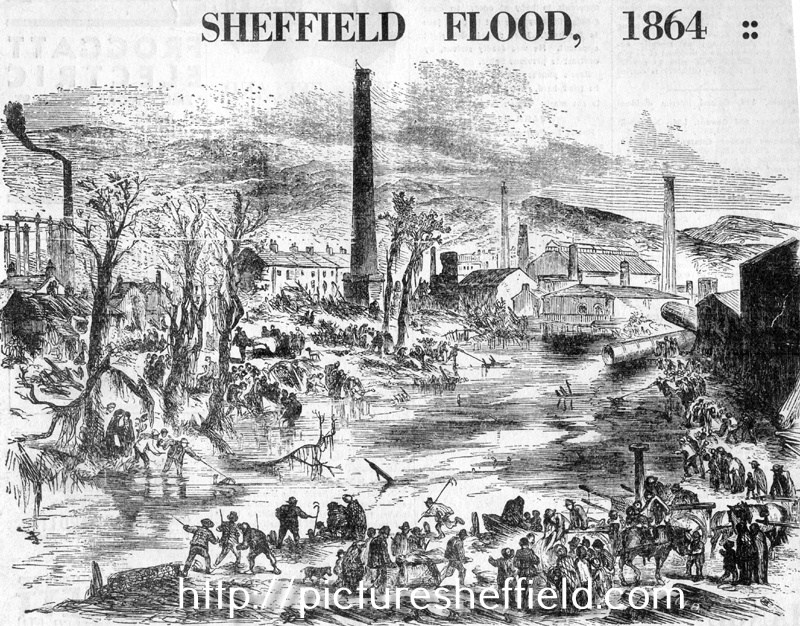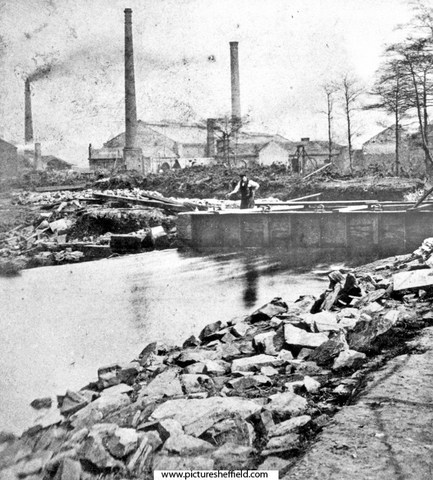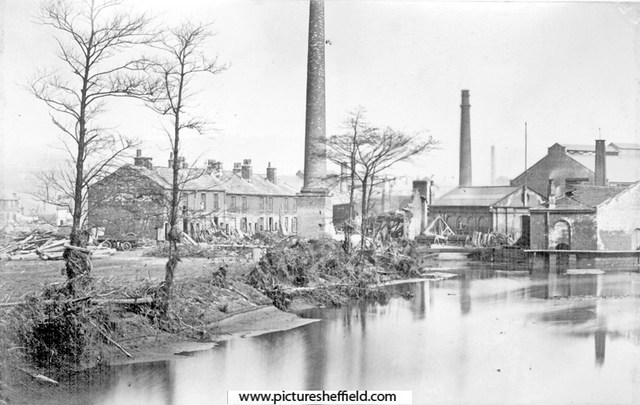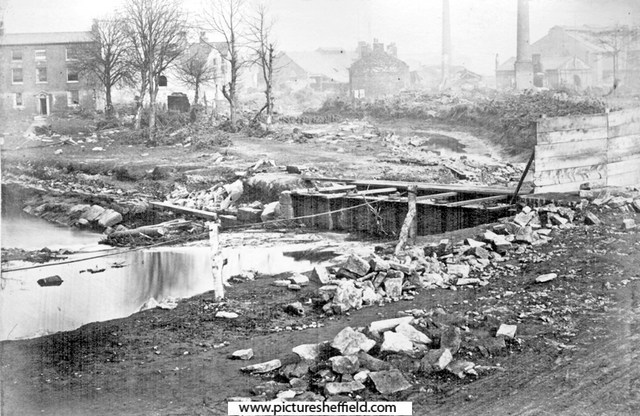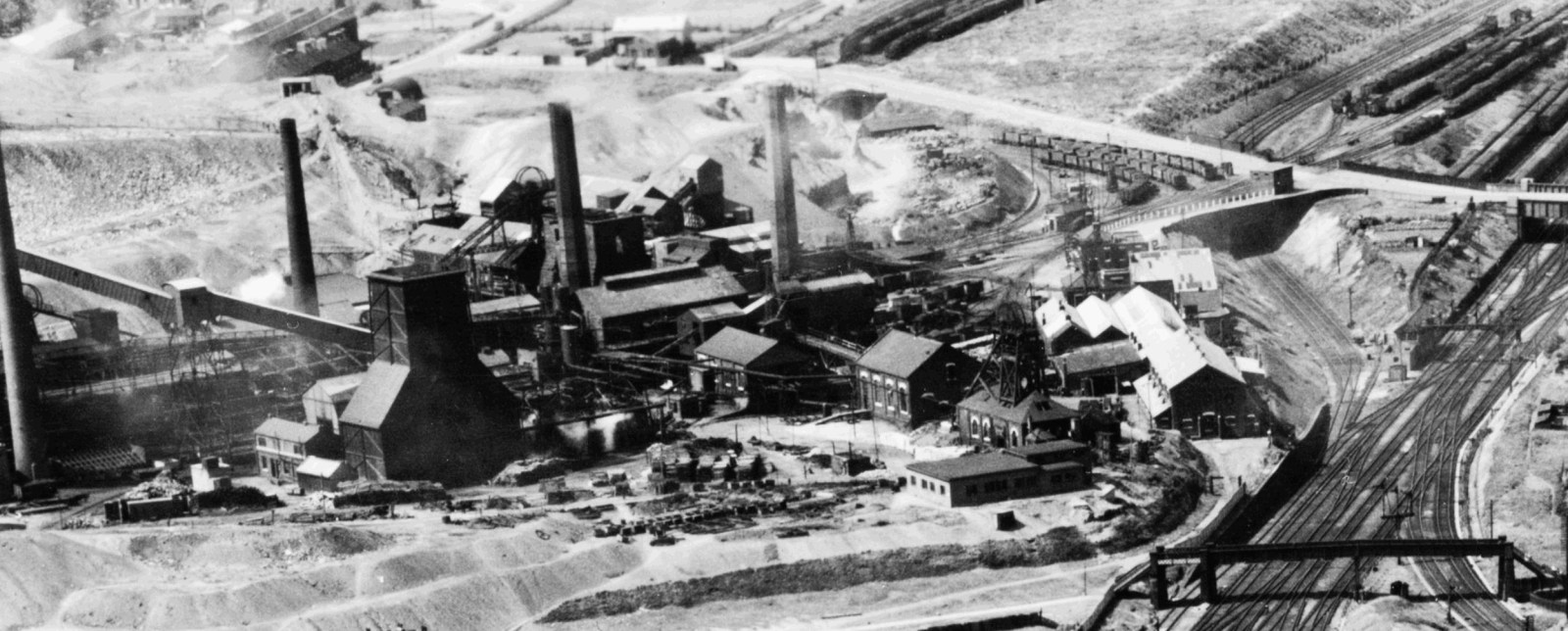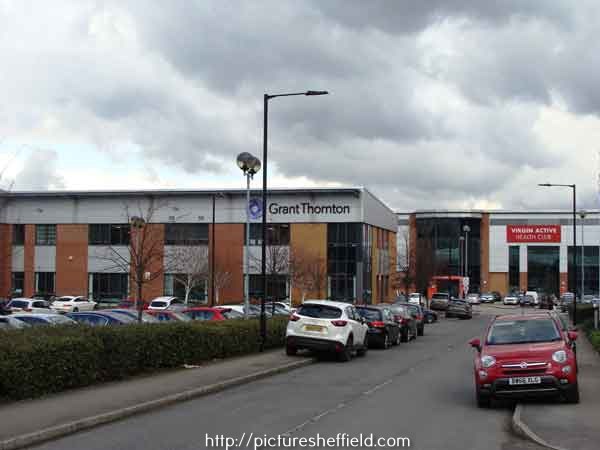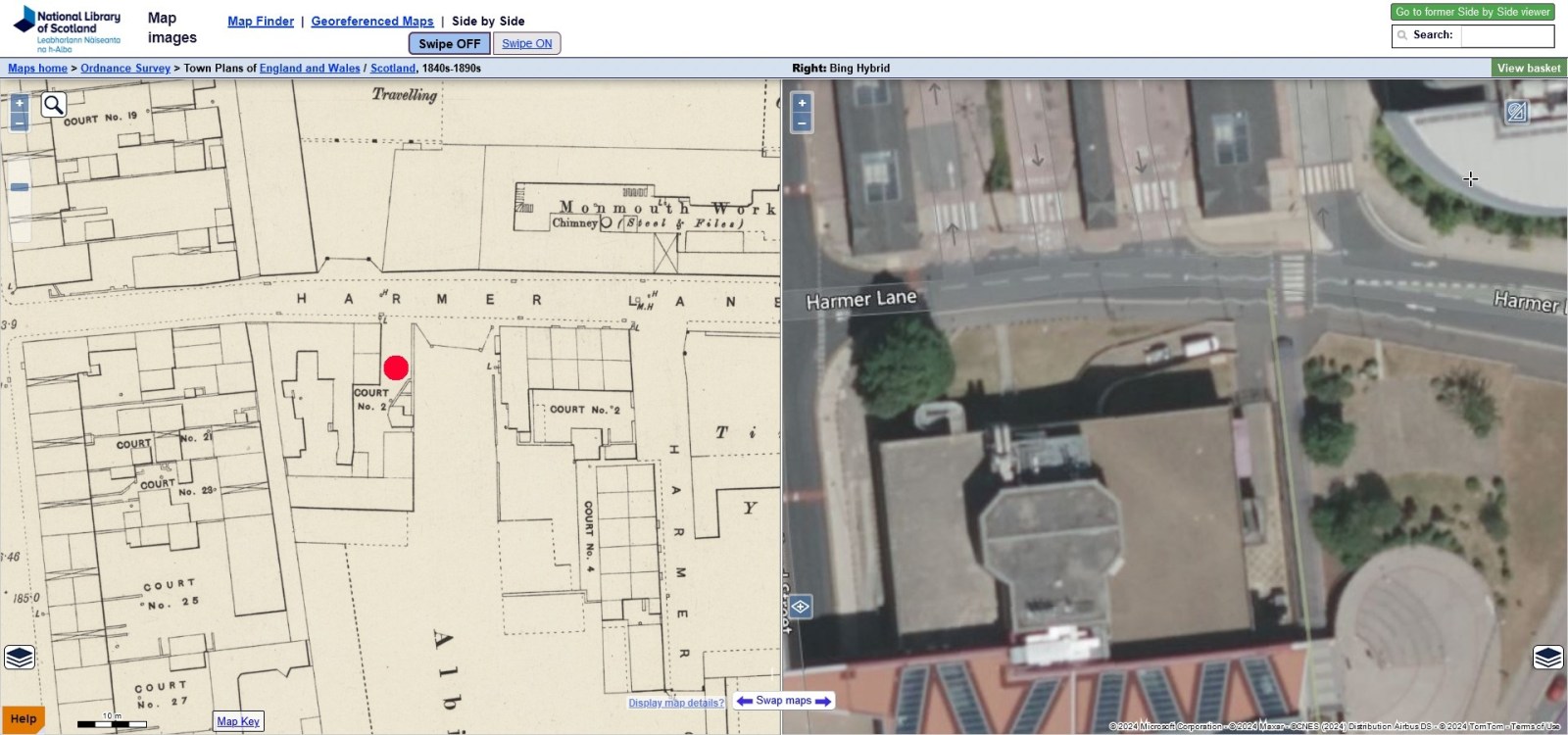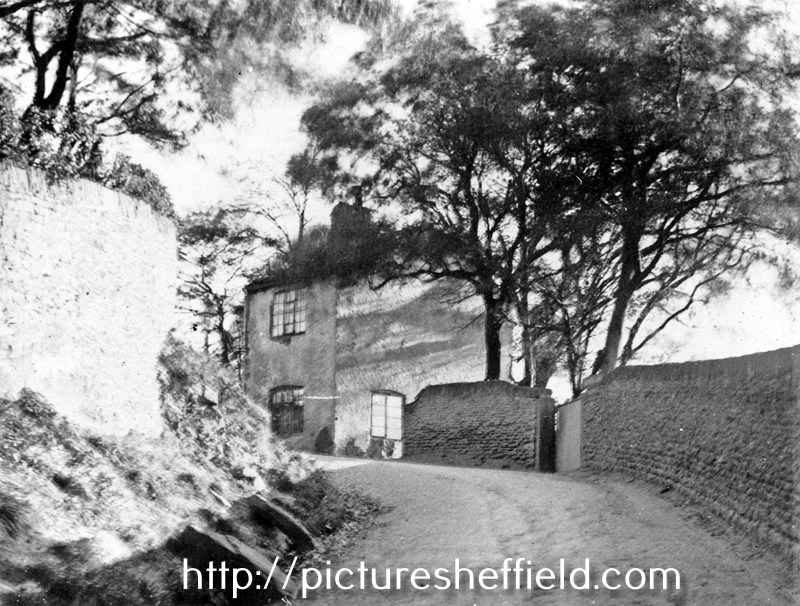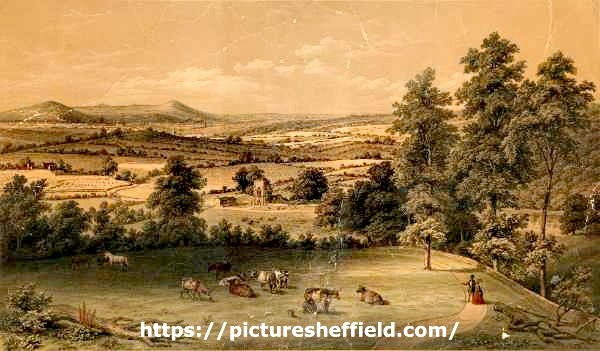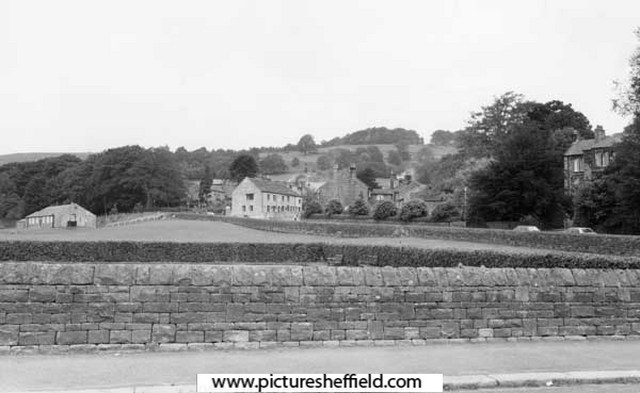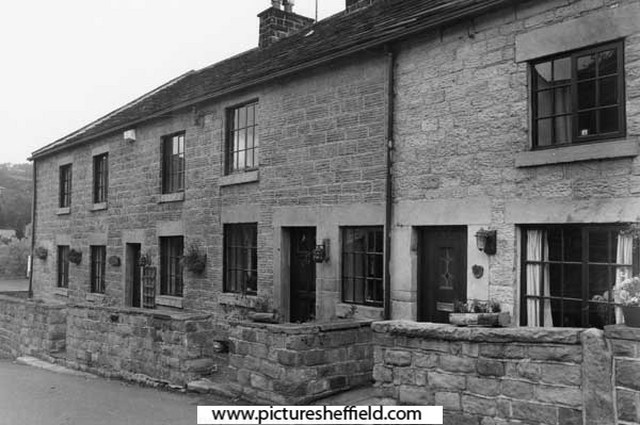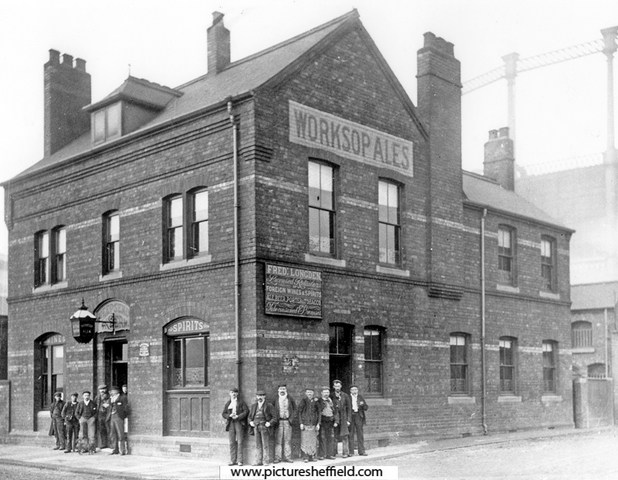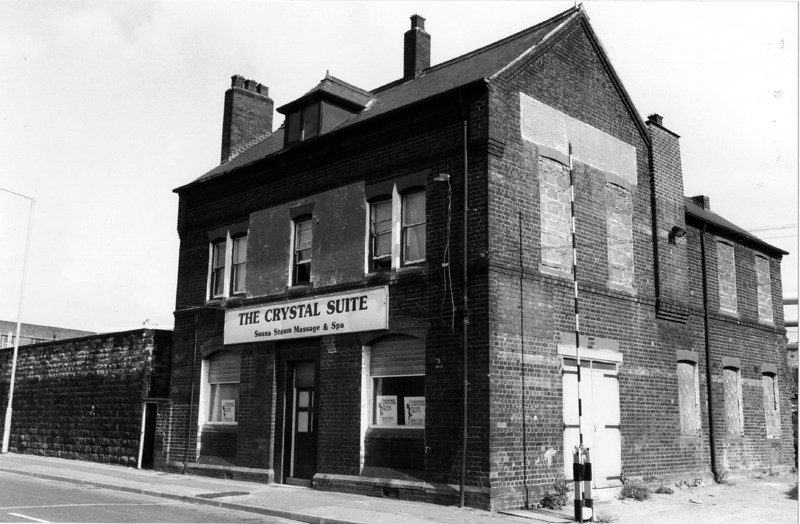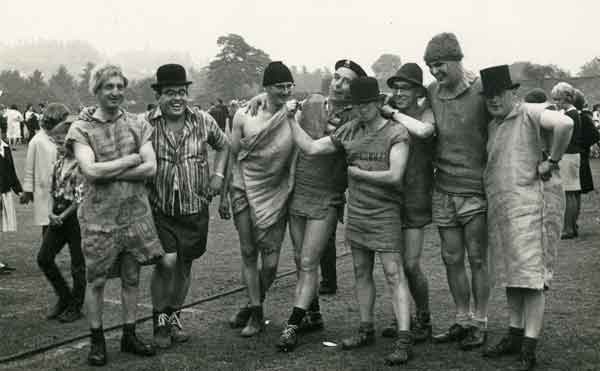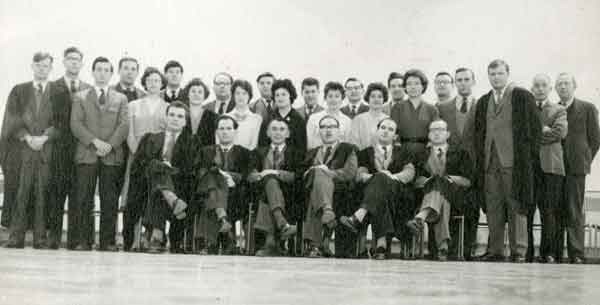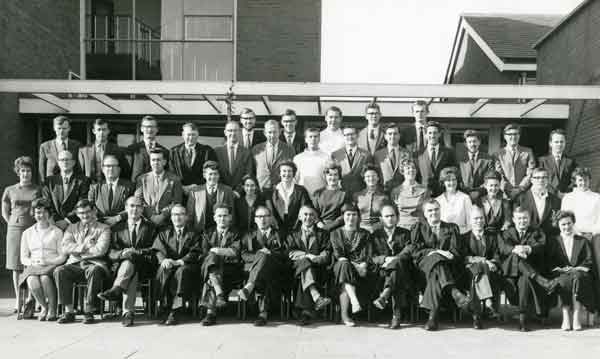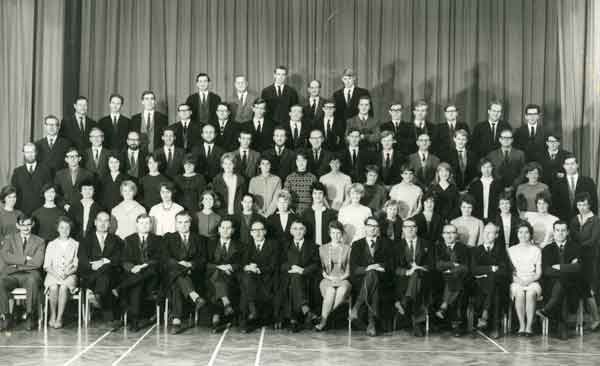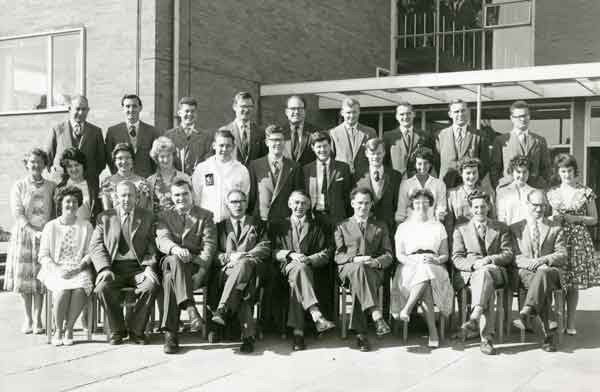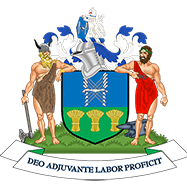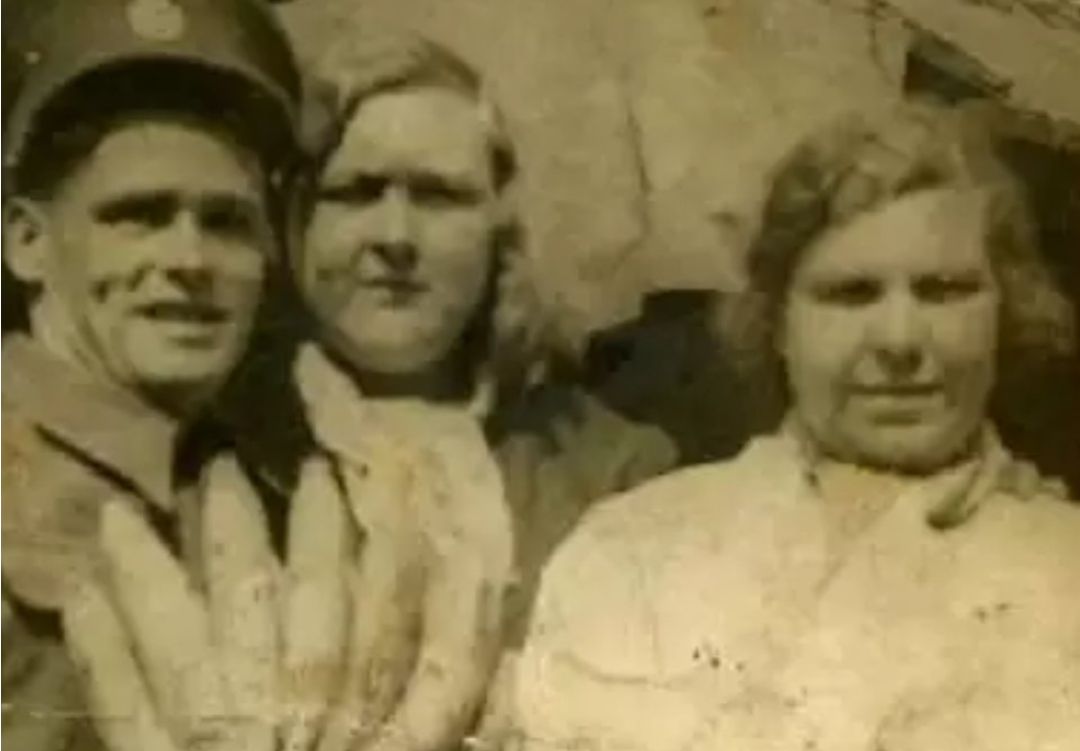Search the Community
Showing results for 'coal pit lane'.
-

Morton Wheel, Philadelphia Works & Bacon Island
Ponytail replied to Ponytail's topic in Sheffield History Chat
Sheffield Flood showing damage at Philadelphia after the inundation, searching for the bodies. Works belonging to William and Samuel Butcher, Steel Tilters and Rollers, Philadelphia Steel Works, Bacon Island, in background. 1864. u03594 From Sheffield Telegraph, 12/03/1938. For more information see: The Great Sheffield 1864 Harrison Ref: 942.74 S. The Collapse of the Dale Dyke Dam 1864, Geoffrey Amey Ref. 942.74 SST Damage at William and Samuel Butcher, Steel Tilters and Rollers, Philadelphia Steel Works, Bacon Island. y00945 Taken from 'Sheffield Inundation, 1864', Ref. 942.74 SQ. Remains of the 'Shuttle House', residence of James Sharman, at the head of Bacon Island; so called because he had charge of the shuttle by which the water was supplied to some mills and factories a little lower down. William and Samuel Butcher, Steel Tilters and Rollers, Philadelphia Steel Works, in the background. s00950 Remains of the 'Shuttle House', residence of James Sharman, head of Bacon Island, William and Samuel Butcher, Steel Tilters and Rollers, Philadelphia Steel Works, in background. House in background, left, is 'The Grove' y00944 Taken from 'Sheffield Inundation, 1864', Ref. 942.74 SQ. Extract from the Great Flood at Sheffield on 12th and 13th March 1864. Pages 58-64. THE FLOOD AT BACON ISLAND. A little lower down an island is formed by the river dividing into two branches,and this low-lying piece of land is called Bacon Island. The destruction here was very great, as the water swept completely over the island. In one of the houses there lived Mr. Howe, metal smith. The inmates were aroused by the Flood sweeping over the house; but it was strong enough to withstand the shock, and all the family escaped by getting up into the top bedrooms. The water filled the house up to the chamber floors. A large greenhouse was carried away, as was also the back kitchen. Doors were burst open, windows broken in, and all the furniture damaged or destroyed. On the south side of the island a stable, occupied by Mr. Greaves, treacle boiler, was knocked down by the flood, and such was the force of the shock that the stable wall dashed through the wall into the next house. A pony, belonging to Mr. Greaves, was drowned in its stall. The adjoining house was occupied by George Shaw, a miller’s labourer, and his family. The water filled the lower rooms, and floated the beds in the chambers. A portion of the foundation gave way, the house tottered, and its inmates every moment expected to be engulfed in the torrent which raged around. Their fears were happily not realised; for the house stood, and all was saved. GALLANT RESCUE OF A FAMILY BY A WATCHMAN. At the head of Bacon Island was the residence of Mr. James Sharman, known as the “Shuttle House,” so called because he had charge of the shuttle by which the water was supplied to some mills and manufactories a little lower down. In the house was Mr. Sharman, his wife, a daughter, two daughters-in-law, and four grand children, one of them being a baby. When the flood burst upon the island they were all asleep; but they were aroused by Police Constable John Thorpe, who was on duty in the neighbourhood, and saw the danger to which the Sharmans were exposed. Thorpe heard the roar of the Flood approaching, and with praise worthy promptitude and courage, he went to the rescue of others, even at the imminent peril of his own life. When the Sharmans were called up the lower rooms of the house were filled with water, and the bedrooms were being filled rapidly. The only means of escape was through the bedroom window; but even this means of egress was closed by an iron bar which had been placed across the window frame for greater security. By this time several people had come to the aid of the watchman, including George Walker, of Philadelphia, and his brother. Sharman, seeing that it was a question of life and death to himself and family, seized hold of the iron bar, and with the strength of desperation wrenched it from its holdfast. The window was now opened, but it was still a difficult matter to get out, as the water surrounded the house. The watchman and the two Walkers, however, stood on an elevation, and were not so much submerged as to be in personal danger. The watchman told the mother of the baby to throw it out to him, and she did so, though not without some hesitation lest her little one should fall into the Flood which was swelling and raging beneath. Her fears on that head were soon relieved; for the watchman caught the baby in his arms as neatly as though he had been an experienced nurse and not a protector of the nocturnal peace. The babe was deposited in a place of safety, and the next thing was to get out the remaining inmates of the house. It has been stated that a ladder was obtained, and that in this manner they escaped; but, it appears, there was no ladder in the question. One by one, the members of the family got out of the window, and were lifted down by the watchman and other persons who were helping. Of course the Sharmans had nothing on but their night clothes, and the awkwardness of their predicament may be imagined. Although there were nine people in the house all this occupied very little more time that it takes to narrate the incident. The last person had hardly been lifted out of the window when the house fell down with a loud crash. It was swept away so completely that not a vestige of it remains except the foundation. The Sharmans have since expressed the most lively gratitude to Thorpe, the watchman, for his intrepid bravery, which has also received notice in the form of one or two presentations from parties who thought that such conduct ought to be recognised and rewarded. After their narrow escape the Sharmans were taken to the house of a neighbour, where they were provided with clothing and other requisites. Of course they lost all their furniture, and everything they possessed. The following is Policeman Thorpe’s own account of the affair. He says:– I was coming down from Hillfoot about 12.30 p.m. I heard a great noise on the river as if a great rush of water was coming down through the gardens opposite to the old barrack wall. I saw that Bacon Island was in danger, and I ran with all speed to awaken the people, and warn them of the danger. I looked over the wall on the bridge leading to Bacon Island, and saw that the water was coming over the shuttle gates. I knew that the water had no business coming over there, so I rapped the family up and told them to get up as there was a flood coming and their house would be washed away. I then ran down Bacon Island, to awaken the other people, but I could only get half-way before the water was up to my waist, and pieces of timber and rubbish floating about my legs: so I ran back as fast as I could through the water, and tried to break open Mr. Sharman’s door, but I could not; and I told them to get through the chamber window, and I would catch them. The first they threw out to me was a young child. I ran up George Street, and knocked up a neighbour, and gave her the child. I then ran back, and received a second child; I did the same with it. I then ran back nine successive times and got them all out safe; the father being the last to leave the house. As soon as I received the father, I said to him “Run, now, for your life !” We had no sooner got on the main road than the house fell, and took the bridge with it, leaving nothing to be seen but one vast sheet of water. I then went and knocked the people up at the bottom of George Street. The following is the statement of an eye-witness:– I am a resident in the neighbourhood, and I was awoke out of my sleep by the cries of the unfortunate family of the Sharmans; I immediately got up and looked through my chamber window, and saw the watchman, up to his waist in water, carrying a young child in his arms up George Street. I got dressed immediately to go to his assistance, but before I could get to him he had saved the whole family, nine in number, and there was not a vestige of the occupier’s house remaining. After saving these, he roused up some occupants at the bottom of George Street, all the time up to his waist in water. He succeeded in rescuing them before the water got too deep in their houses. There were either four or five families at the bottom of George Street flooded in their houses, but owing to his timely aid he got them out, and locked their doors. When he had done all that possibly could be done, he remained true to his duty, in his wet clothes, shaking with the cold. The man seemed quite exhausted with fatigue; and being wringing wet through, there he stood till the sergeant came to him, two hours afterwards. I heard the watchman ask the sergeant if he could go home and change his wet clothes. The reply was— “I don’t know; I’ve got no order about that.” I thought that very hard indeed; but the man never murmured, but did his duty in his wet clothes from 12.30 until five a.m., when he went home. I write this on behalf of the bold watchman, who risked his own life nine successive times to save his fellow creatures. I understand he was a soldier before joining the police. He has served in the Crimea and India in the 33rd Regiment, and he bears a very good character in the neighbourhood of Hillfoot and Philadelphia for being a good watchman. It may here be stated that some time afterwards, the Inundation Relief committee voted £100 to reward John Thorpe, and other policemen who had made extraordinary exertions during the flood. SHOCKING DEATH OF A FAMILY AND EXTRAORDINARY ESCAPE OF A CHILD. On the South side of Bacon Island were two houses, which stood crosswise to a row of buildings previously referred to, in which lived George Shaw, and others. One of these houses was occupied by Geo. Wright, a furnace man, employed at Messrs. Butchers’, and the other by a family named Mappin. Wright was awoke in the middle of the night by the rush of the waters. He at once got up, and knocked at the partition wall to alarm his neighbours. Mrs. Mappin replied by knocking again, and in a moment afterwards she heard a loud shriek. Then all again was still, except the noise of the wind and the roar of the flood. When the water had subsided, it was discovered that the gable wall of Wright’s house had been carried away. At first it was not known exactly what loss of life there had been in this house. Mr. Wright had been to a funeral the day before the flood, and the neighbours were not aware whether he had returned or not. There is, however, No doubt that Wright was in the house at the time of the flood, and that he perished in its waters. There were also in the house Mrs. Wright, her young child, and an older child, a visitor, the daughter of Mr. Johnson, pork butcher, Sheffield Moor, with whom Mrs. Wright had formerly lived as servant. Mrs. Wright was drowned, and so was the visitor, the child of Mr. Johnson. Mrs. Wright’s child had a most extraordinary escape. After the subsidence of the waters, a young man climbed on a pole through the bedroom window, and there he found the little child asleep in its bed, unconscious of the danger it had escaped, and the terrible bereavement it had sustained. Even the candle which its parents had lighted in their terror when the flood came, was burning near the child, disclosing on its features the soft and peaceful slumbers of infancy. The young man took the child up, and said to it, “Where are your dada and mamma?” “They have gone out of the window,” replied the little innocent. The child was taken out of the ruins of its father’s house and conveyed to a place of safety. Afterwards the Johnsons applied for the child, thinking that it was their child that had escaped. Their distress on finding that their child was the lost one may be imagined. We understand, however, that Wright’s child which escaped has been handed over to Mr. Johnson, and that he has undertaken the care of it in place of his own. Johnson’s child was not found till more than two months afterwards, when it was got out of the river Don at Kilnhurst. The body was in an advanced state of decomposition, and the features were unrecognisable. One of the fingers of the left hand had been taken off a few years ago, which led to the identification. THE INCIDENTS AT BACON ISLAND DESCRIBED BY AN EYE WITNESS. An eye-witness of the thrilling scenes at Bacon Island described them as follows:– I was seated at my fireside, a little after twelve o’clock, when my attention was arrested by a strange noise, together with the shouting of many people. Alarmed, I hastened to my front door;— upon opening it, I was completely bewildered by the frightful sound that fell upon my ears; it has never yet been truly described, nor can it ever be. The nearest approach to a correct definition of it, that I have heard, was that of a poor man whose house withstood the storm that swept away his furniture, &c. “Sir,” said he to me, “I heard it coming just like hissing thunder.” I was so stupefied by this horrid sound, that I did not see the wild waters immediately before me, nor did I dream of the nature of the calamity by which I was threatened, until I actually stepped into the water at my garden gate. I at once mounted the railings, and was terrified by the sight of the rushing flood. Sharman’s house was immediately opposite, only across the road. My eye had but just caught the waters foaming at its base, when the end fell into the flood, affording a glimpse of the rooms, furniture, &c.; it was but a glimpse, for in a moment the remainder of the house fell towards the road, and “sank as lead in the waters,” not leaving the slightest vestige visible. As I was not aware that Sharman and his family had escaped a few minutes before, I supposed they were all lost; a thrill of horror came over me, that caused me to turn my head from the deep that had, as I supposed, swallowed them up. I then perceived that the waters had risen, and surrounded me in my garden— I at once leaped into them and retreated into my house, which is considerably elevated above the road. The stream rose rapidly, until it reached four feet above the level which it had attained when it swept away Sharman’s house. As it had now reached my door step, I requested that my children should be taken out of their beds and carried to a neighbouring house on higher grounds. Before this could be done, I fancied the waters ceased to rise; presently I had the happiness to see that they were subsiding, so that my family and myself were safe; still I was oppressed with the thought of others. When the flood invaded it rose rapidly, but when it retired it seemed to sink slowly, very slowly. At length the road was clear of water (not of mud). We then perceived that the bridge leading to the island was swept away. Anxiety to know the fate of the cottagers on the island constrained some to creep over the top of the shuttle. I essayed to follow, and succeeded. Upon reaching the other side we found we were landed in chaos, and had to grope our way (the darkness was terrible) through thick mud, under and over trees, Timber, stones, and wreck of every kind. Upon reaching the cottages we were rejoiced to find all their inhabitants safe, excepting poor Wright, his wife, and the little girl who was visiting with them. The end of Wright’s house jutted out into the stream which brought down a beam that broke a large hole through it; into this the stream poured until it threw down the front of the house, carrying away the door, the stairs all the furniture, and we think Wright, his wife, and the child too; but as the Flood never reached the chamber in this house, we were driven to the conclusion that the three persons who perished must have been down stairs. Besides, one of the neighbours across the yard thinks that Wright must have been carried by the stream to his door if not actually into his own house, for he declared it was not from the other side of the yard, but from his own room down stairs, that he heard him cry, “Mr. Shutt, Mr. Shutt, save me, oh! do save me!” Mr. Shutt promptly called out “Where are you?” Alas! there was no response. As speedily as possible we supplied the poor sufferers with candles, but this was no easy matter, the lower rooms being filled with furniture, wreck, mud, &c., to such a height that the inhabitants could neither get down stairs to us, nor we up to them, but with the greatest difficulty. At length we succeeded in every case, and had the happiness of seeing bright lights in those abodes which, an hour before, we feared had been overtaken with the darkness of death. After we had supplied these poor sufferers with lights a young man climbed by a pole up into Wright’s chamber. He there found the drowned man’s little child asleep in her bed. Upon taking her up, and asking her where her dada and mamma were, she replied, “They have gone out of the window.” This led us to suppose that Mr. and Mrs. Wright must have been looking out of the chamber window when the front of the house gave way and carried them with it; but upon inquiry I learn that there was no chamber window at the front of the house. They must therefore have been swept out of the room below. Had they been upstairs they would have been as safe as their child was. Having done what we could for these unfortunate cottagers we left them and “waited for the break of day,” which, when it came, revealed to us scenes of wretchedness and ruin of which they will have but faint conceptions who have only visited the island since Saturday morning. A little lower than Bacon Island is a district called Philadelphia, which is occupied by mills, large manufactories, and other buildings, which were nearly all flooded to a greater or less extent. From the mill of Mr. Joseph Rodgers the torrent swept away sixteen pigs, and their sties, but five of the animals were recovered near the Infirmary, lower down the stream. The water filled the mill up to the second floor, and four horses were drowned in their stable. Some men had been at work in the mill all day and all night filling bags with flour, and were just about beginning to draw them to the upper story when the rush of water burst into the room. They had just time to get up the stairs before the flood reached them, and were saved. The flour floated about the mill, and for all practical purposes was destroyed. A wagon and some carts were floated away — the wagon being left in the yard of Messrs. Butchers’ works below, and the carts resting on the low outbuildings in the neighbourhood. Much valuable timber was carried away, including an oak log of two tons weight, which was deposited near the New Inn, Shales Moor. The partition wall between the stable and shed was broken, and a newly erected tilt — Mr. Rodgers being a manufacturer of steel as well as flour — was carried away bodily with the exception of one gable end. A number of cottages near the mill yard were flooded to such an extent that the bedrooms were some depth in water. The window of Aaron Dearden, flour dealer, was burst in, and he and his family had a narrow escape. The occupants of all the adjacent houses were in a perilous position, but fortunately the walls withstood the violence of the flood except those of one unoccupied house The works of Messrs. W. and S. Butcher, a little lower down, were greatly damaged. Walls and gates were swept quite away; a crinoline mill and workshops entirely disappeared, and along with them a boiler, forge, and tilt, the chimney, which stood in the middle, being alone left to mark their site. The heavy bridge which crossed the goit running through the works is destroyed. Part of the rolling mill, beyond the bridge, was carried away, and the blacksmith’s and other shops were greatly damaged. The machinery, buildings, and the stock of steel have been seriously damaged. In Messrs. Butchers’ works the body of a woman, perfectly naked, was found after the flood. On the premises of Messrs. Butcher lived Mr. Henry Walker, manager, and his family, consisting of a wife, four daughters, a son, and a nephew. The water dashed with such fury against the house that a kitchen and front wall of the building were entirely swept away, much damage being also done to the inner walls. When the flood came the members of the family hastily assembled in a front and back bedroom. The house rocked, and in a few moments the whole wall fell down. The nephew was standing at the front bedroom window when the wall fell, and only escaped by throwing back his hand and catching hold of one of the bed posts. Very fortunately the main portion of the house stood, and none of the inmates perished. The house was handsomely furnished; but scarcely a wreck of the valuable contents of the lower rooms remained. An expensive piano- forte and the other costly furniture, totally disappeared. Two pigs, two goats, and twenty-five fowls were drowned. The dog was saved. Two valuable horses belonging to Mr. William Butcher were destroyed. The works of Mr. William Butcher, jun., were damaged, but not so seriously. Several other large manufactories in this district suffered; but it is not within the scope of this narrative to enter largely into a mere enumeration of property or buildings destroyed. AN INCIDENT AT PHILADELPHIA. The following incident is related by the Rev. Mr. Wright, of Philadelphia House, curate of St. Philip’s Church. Mr. Wright’s garden is separated from the road by a wall about eight feet high. The flood rose some eighteen inches higher than the wall, but not high enough to extinguish the street lamp by the road side. Inexplicable sounds were heard from the garden during the night, and when day dawned the garden was found to be covered over with a deep bed of mud, in which was a horse in a half erect position. It had been carried on the crest of the wave over the wall. It was found to be alive, though in a greatly exhausted state. Some food was given to it, and after a time it recovered. The animal had on his halter, which was attached to a stone of some 16 lbs. weight. The stone had evidently been dragged from the wall of the stable, and the wonder is that it did not insure the drowning of the horse. The owner of the animal has not been ascertained." The scene the morning after the Flood must have been horrendous for everyone connected to the Philadelphia Works, some fearing for employment, livelihood and the Butchers devasted by the damage done to the business they had built up. No amount of compensation could ever replace the lives lost, the trauma of the night nor the precious possessions of the families. Some would be fearful of ever living or working there again. On the upside the properties which remained would be repaired or rebuilt and the business would eventually thrive again. The extent of the damage done can be seen in the Flood Claims. William Butcher of Five Oakes, Sheffield & Samuel Butcher of Banner Cross, merchants. Claim for extensive damage to Philadelphia Works and other tenanted properties amounting to £6,203/17/5d. https://sheffieldfloodclaimsarchive.shu.ac.uk/claimSummary.cfm?claim=3-2692 Freehold Estate - the Site of which belongs to William & Samuel Butcher and the Buildings, Machinery & Stock belonging to Samuel Butcher only. Lists damage done to "New Works" A total claim for £3,235/9/6d assessed at £2,499/10/- https://sheffieldfloodclaimsarchive.shu.ac.uk/claimSummary.cfm?claim=3-2693 Flood Claims of those mentioned in the Flood Report, Employees and other residents of Bacon Island the night of the Flood. William Howe, electropate manufacturer, Walkley, late of Bacon Island. https://sheffieldfloodclaimsarchive.shu.ac.uk/claimSummary.cfm?claim=1-19 James Sharman, smith, 34 George Street, Philadelphia Estimated losses sustained at "Shuttle House" Bacon Island. https://sheffieldfloodclaimsarchive.shu.ac.uk/claimSummary.cfm?claim=7-6101 Samuel Greaves, sugar refiner. Philadelphia or Penistone Road, Sheffield. In the report the "Mr. Greaves the Treacle Boiler" including "Damage at the place of Business situate on Bacon Island, Philadelphia Sheffield" https://sheffieldfloodclaimsarchive.shu.ac.uk/claimSummary.cfm?claim=6-5153 George Shaw, carter, Cross George Street. Late Bacon Island. https://sheffieldfloodclaimsarchive.shu.ac.uk/claimSummary.cfm?claim=3-2780 James Shutt, 45 Cross Bedford Street late of... Left bank but probably an address on Bacon Island Personal Property including loss of wages for him and 2 sons. https://sheffieldfloodclaimsarchive.shu.ac.uk/claimSummary.cfm?claim=3-2780 Joseph Rodgers, miller. Philadelphia Steam Corn Mill. https://sheffieldfloodclaimsarchive.shu.ac.uk/claimSummary.cfm?claim=4-4067 Aaron Dearden, bookeeper and traveller, Oxford Street late of Philadelphia, Sheffield, shop keeper. https://sheffieldfloodclaimsarchive.shu.ac.uk/claimSummary.cfm?claim=7-6134 Aaron Dearden, millers clerk, 2 Lower Oxford Street, Sheffield, Claim for injury. https://sheffieldfloodclaimsarchive.shu.ac.uk/claimSummary.cfm?claim=9b-124 Joseph Rodgers, Miller and engineer and Aaron Dearden, Miller of: [Joseph Rodgers] Philadelphia Steam Corn Mill; [Aaron Dearden] Oxford Street. As Executors under the Will of Mr. William Rodgers late of ~ Philadelphia deceased Owner of the Real and Personal Property mentioned in the annexed Column. Valuation of damage done by the recent Flood to Messrs. Rodgers' Property situate at Philadelphia, Sheffield. Property including Forge; Mill; 5 cottages; 1 Sales shop and dwelling house (Deardens house); 1 dwelling house (Rodgers house); stable and cart shed. https://sheffieldfloodclaimsarchive.shu.ac.uk/claimSummary.cfm?claim=4-4074 Henry Walker, steel manager, Philadelphia Steel Works, residing at 39 Malinda Street, Sheffield. https://sheffieldfloodclaimsarchive.shu.ac.uk/claimSummary.cfm?claim=2-1588 William Garnett, engine tenter. Philadelphia. Late of Bacon Island. https://sheffieldfloodclaimsarchive.shu.ac.uk/claimSummary.cfm?claim=4-3691 George Tetley, steel weigher. 50 George Street, late of Bacon Island. https://sheffieldfloodclaimsarchive.shu.ac.uk/claimSummary.cfm?claim=1-388 Robert Ford, cutler, Court 73.Infirmary Road, late of Bacon Island. https://sheffieldfloodclaimsarchive.shu.ac.uk/claimSummary.cfm?claim=5-4412 Thomas Yardley, wheelwright and joiner, Infirmary Road, late of Bacon Island. https://sheffieldfloodclaimsarchive.shu.ac.uk/claimSummary.cfm?claim=5-4699 John Shaw, steel melter, Bacon Island. https://sheffieldfloodclaimsarchive.shu.ac.uk/claimSummary.cfm?claim=6-5115 Edwin Goodwin, crucible maker. 21 Daisy Walk, late of Bacon Island. https://sheffieldfloodclaimsarchive.shu.ac.uk/claimSummary.cfm?claim=7-5796 Robert Scholey, File Cutter, Wentworth Street.late of Bacon Island. https://sheffieldfloodclaimsarchive.shu.ac.uk/claimSummary.cfm?claim=7-5817 William Mottram, white metalsmith, Siddal Building's.Orchard Street, Harvest Lane, late of Bacon Island. https://sheffieldfloodclaimsarchive.shu.ac.uk/claimSummary.cfm?claim=7-6074 William Mottram also claimed for an "Injured person" his wife, Martha. https://sheffieldfloodclaimsarchive.shu.ac.uk/claimSummary.cfm?claim=9b-329 James Allott, wagoner, Furnace Yard, Albert Terrace Road, Infirmary Lane, late of Bacon Island. https://sheffieldfloodclaimsarchive.shu.ac.uk/claimSummary.cfm?claim=8-6284 John Short, No. 3 Court, Stanley Street. rod roller at Messrs Butchers, Philadelphia Works. https://sheffieldfloodclaimsarchive.shu.ac.uk/claimSummary.cfm?claim=1-239 -
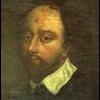
Fatal accident at Nunnery Colliery
History dude replied to dereklevesley's topic in General Chat (Anything Goes)
I think you mean Nunnery Colliery. Inquests are often covered in the local newspapers. There's an image below of the pit in 1951. -
A map of the land taken for the use of the White-lead Work, with the Buildings etc. 1759. White Lead Works and the fields between the Porter and the Sheaf, on either side of (Leadmill Road). Boatman's Bridge. Pond Street (south end). Surveyor: William Fairbank I. https://www.picturesheffield.com/frontend.php?keywords=Ref_No_increment;EQUALS;arc03403&pos=1&action=zoom&id=98646 A plan of several gardens in Pond Lane held by sundry persons of the Duke of Norfolk, and a plan of the course of the pipe conveying water from the Bath through them to the White Lead Works, [1777] Reference: [?leased] by the Whitelead Company of the Earl of Surrey. The White Lead Mill, cutlers wheel, dwelling houses, stackhouses and all the other buildings; Alegar yard, middle yard, litter yard, yard betwixt the damm and the mill, court by the mill. Also marked tilt damm, goight, River Porter, Boardman's Bridge, Pond Lane, John Waterhouse's tenement, William Nicholson, Thomas Needham, Robert Burnand, William Woolhouse, Widow Beard, Lydia Marriott, Nathaniel Cosins, John Burkett, Peter Spencer, John Wigfall, William Ruddinforth, and James Hattersley's land. https://www.picturesheffield.com/frontend.php?keywords=Ref_No_increment;EQUALS;arc04203&pos=11&action=zoom&id=105138 A plan of the Farm lately held of the Duke of Norfolk by Geo. Calton, with the Whitelead Works, etc. erected thereon. Surveyor: [William Fairbank II]. Fields between the Porter and the Coach-and-Six Farm and between the White Lead Works and the Corn Mill dam; Lead works and Cutler's Wheel clearly marked; numerical list with field names and descriptions and acreages; Proposed new course of the River Porter added, with new acreages listed. (Shoreham Street, Arundel Street, Brown Street, Furnival Street, White Lead Works, Leadmill Road, Leadmill Street, Matilda Lane, Matilda Street, Pond Street (south end), St Mary's Road) White Lead Works and the fields between the Porter and the Sheaf, on either side of (modern Leadmill Road) https://www.picturesheffield.com/frontend.php?keywords=Ref_No_increment;EQUALS;arc03404&pos=2&action=zoom&id=98647
-
Any info on the house or the gate house please ? I know it was a Naval Cadette training base , where has the old boforse gun gone?, but has it past naval links,who built it and when ? Also the playing fields in front of it , what are they built on i.e. gardens or the remains of mine workings, as I have seen large issues of water spring up from the bank sides in front of the old wood at the side,after very heavy rain fall.
-
Link to: Brightside Lane Houses. https://www.sheffieldhistory.co.uk/forums/topic/18229-brightside-lane-houses/
-
The Steam Clock public house, Brightside Lane. Sheffield Flood Claim: William Butcher, William Fisher and Thomas Edward Mycock, Trustees of the Sheffield & South Yorkshire Permanent Building and Investment Society, Care of Alfred Allott, Prior Court, Sheffield. For damage to 10 Houses & 2 Houses & Shops situate adjoining a Public House known as "The Steam Clock" in Brightside Lane, nr. Sheffield. https://sheffieldfloodclaimsarchive.shu.ac.uk/claimSummary.cfm?claim=7-5680
-
A Plan of George Hobson's Mill, Mill Dam, Weir, etc. at Heeley and of the contiguous parts of Benjamin Roebuck's Estate with description of other adjacent lands and part of Heeley, by William Fairbank. 1770. https://www.picturesheffield.com/frontend.php?keywords=Ref_No_increment;EQUALS;arc00462&pos=10&action=zoom&id=56556 Shown on the map are: River Sheaf, Little London Lane, Far Meadow, Nearer Meadow, Taylor's Grinding Wheel, Turnpike Road from Derby to Sheffield [Chesterfield Road], a Toll bar [?Heeley Toll Bar at the bottom of Albert Road] and lands of Joshua Spooner, Samuel Shore, Jonathan Wainwright, Benjamin Roebuck and William Haworth. It is believed the present day location of this area is near to 300 Broadfield Road Park, Broadfield Road, S8 0XQ. Grant Thornton, accountants and financial and management services, Unit 2 Broadfield Court showing (right) Virgin Active No.300 Broadfield Park, Broadfield Road. 2018. a04101 Photographer: Andrew Milroy.
-

Do you know my family? Swindells / Anderson / Johnson
SteveHB replied to BMJ214's topic in Sheffield Genealogy
-

Do you know my family? Swindells / Anderson / Johnson
BMJ214 replied to BMJ214's topic in Sheffield Genealogy
Hi. I’m hoping someone can help me. I’ve come across a couple of addresses on Ancestry that I’m unsure about. 1. Philadelphia House, Ecclesall - 2. Tacna - 3. Harmer Lane (2 cut 1 house) 4. Fair View, Bamford Thanks in advance. -
Unidentified House & Road. Bounty Lane written on back of photograph but unable to find this location. t02554
-
The lot which became "Foresters" is shown at the junction of Division Street and Rockingham Street labelled boldly in capital letters as William Smith then underneath written "now John Green" Plan of certain building land the property of Messrs Brittain, Wilkinson and Brownell. 1829. https://www.picturesheffield.com/frontend.php?keywords=Ref_No_increment;EQUALS;arc04097&pos=14&action=zoom&id=103534 Shows Rockingham Street, Division Street, Rockingham Lane and Carver Street. Also, owners or tenants: John Harrop, Henry Blackwell; Charles Brown; William Smith; Jacob Bridge; John, Joseph, William and Edwin Mouslon. Steel furnaces, cutlers shops and warehouse marked. Surveyed and drawn by J. Fairbank and Son. Premise of William Smith also marked Jacob Bridge Plan of vacant land, the property of Verdon Brittain, Robert Robinson Brownell and Charles Brownell. 1829. https://www.picturesheffield.com/frontend.php?keywords=Ref_No_increment;EQUALS;arc04096&pos=13&action=zoom&id=103533 Shows Rockingham Street, Division Street, Rockingham Lane and Carver Street. Property leased to John Harrop, property leased to Henry Blackwell; also, owners or tenants: Charles Brown; William Smith; Jacob Bridge; John, Joseph, William and Edwin Mouslon. Forester's Inn marked right hand side towards the top. Ordnance Survey Map, sheet no. Yorkshire No. 294.7.25. 1889 https://www.picturesheffield.com/frontend.php?keywords=Ref_No_increment;EQUALS;q00075&pos=2&action=zoom&id=107161 Sheffield History A-Z Public Houses List. Forester's Inn/Yorick/The Yorl/Olive Bar, 57 Division Street Open 1828. 1828 William Smith 1833 William Smith 1834 William Smith 1837 Jacob Bridge 1839 W Deakin 1841 John Parsons [Pigot's ] 149 Rockingham Street 1841 William Richmond [ Whites ] 1845 Charles Holland (149 Rockingham Street) 1846 Charles Holland 1849 George Skinner 1852 George Skinner [57 Division Street] 1854 George Skinner 1856 George Skinner 1859 Herbert Rowe 1862 John Storey 1863 John Storey 1864 John Storey [57 Division Street] 1865 John Storey 1868 Thomas Webster 1871 Thomas Webster 1876 Thomas Webster [73-5 Division Street] 1879 William Thompson 1881 William Thompson [73 Division St] 1883 John Maxfield 1887 to 1890 John Maxfield 1893 John Maxfield 1895/6 Herbert Bevington 1898 Herbert Bevington 1900 to 1902 Herbert Bevington 1903 William Charles Lockwood 1905 William Charles Lockwood 1907 Mrs Eliza Smith 1910 to 1913 Frank Shelton 1916 Frank Shelton 1917 Frank Shelton 1919/20 Frank Shelton 1921 Herbert Walker 1922 Herbert Walker 1923 Sidney Hudson 1924 Gorden Lyall 1925 Gordon Lyall 1929 Gorden Lyall 1931 Harry Rose 1932 Mrs Sarah Agnes A Thomas 1933 Mrs Sarah Agnes A Thomas 1936 to 1939 Frank Jones 1942 Frank Jones 1944 Frank Jones 1948 Frank Lee (73-75 Division Street)
-
I'd read of "Paddy's Goose" then immediately forgotten where I'd read it, so it is very pleasing to bring a keeper of : Paddy's Goose Love Lane, Sheffield Henry Greenwood (any location for Love Lane ? is/was it near the Queens in Pond Street ?)
-

Footpath leading to Parkbank Wood at Beauchief
Ponytail replied to Roger Stevenson's topic in Sheffield History Chat
Don't know how I missed this one. Abbey Dale. 1857 ov00161 Published April 20th 1857 by Wm. Ibbitt, 152 Broad Lane, Sheffield. Day and Son, lithographers to the Queen. Inscription on image reads: Respectfully inscribed to John Rodgers Esq. of Abbey Dale by his faithful servant William Ibbitt. -
Plan of Freehold Land at Upperthorpe and an estate at Hollins, near Malin Bridge, in the hamlet of Stannington belonging to the trustees of the will of the late Thomas Blake, esquire. 1869. https://www.picturesheffield.com/frontend.php?keywords=Ref_No_increment;EQUALS;y12220&pos=3&action=zoom&id=81601 Upperthorpe: Lot 1. Four newly built dwelling houses situate at the foot of Blake Street .. in the occupation of Messrs Hemingway, Townsend, Clayton and Pechy, ... these houses are very well built and finished, and offer a most eligible investment. Lots 2. Plot of building ground with a good frontage to Blake Street. Lots 3. Building plot also fronting Blake Street. Lot 4. Plot of building ground on the opposite, or north east side of Blake Street. Lot 5. Ten freehold ground rents (the original particulars list the lessees'. Hollins: Lot 6. Farm house, outbuildings and garden ... at Hollins in the occupation of Benjamin Slack. Lot 7. Grass land known as Near Back Field. Lot 8. Grass lands known as Far Back Field. Lot 9. Land called Hollins Bottom, fronting Spooner's Wheel Lane. Lot 10. Land called Middle Hollins and land called Upper Hollins, both fronting Hollins Road. Original at Sheffield Local Studies Library: Sale Plans 9 March 1869.
-
Cross Inn, Woodfall Lane, Low Bradfield, closed about 1980. https://www.picturesheffield.com/frontend.php?keywords=Ref_No_increment;EQUALS;s29646&pos=92&action=zoom&id=56159 Cottages at Low Bradfield which were originally the Cross Inn, Woodfall Lane. 4th September 1986.s29621 Low Bradfield. Cottages in the centre were orginally the Cross Inn. 4th September 1986. s29631
-
The site was the eastern end of the Fitzalan Market, which was offices (Fitzalan Chambers) where Tommy Wards' coal sales operation was. After demolition shop premises were built, one of which was Price's Tailors (1928) Ltd (trading as Fifty Shilling Tailors) which opened for business in mid June 1931.
-
Link to: Neepsend Tavern 144 Neepsend Lane. https://www.sheffieldhistory.co.uk/forums/topic/17961-neepsend-tavern-144-neepsend-lane/
-
Neepsend Tavern, 144 Neepsend Lane. Worksop Ales, Fred Longden licensee. s06928 On the night of the Sheffield Flood, 11th & 22th March 1864, the Neepsend Tavern and many properties in the area were badly damaged. Extract from the "A Complete History of the Great Flood at Sheffield" "The Neepsend Tavern was partially submerged, and all the houses in Neepsend Lane were flooded to a great height. The boundary walls of the river were carried away, and many of the houses were gutted. Neepsend Bridge, built strongly of stone, sustained the shock of the Flood without giving way, but it was much shaken, and a part of the parapets of the bridge were thrown down. The stones were of immense size, and the force by which they were overturned must have been prodigious. A vast quantity of debris, timber, and furniture, was piled up against the bridge, which has formed a barrier to its further progress." The gardens (with statues and a large flagpole) and stables at the Neepsend Tavern were totally destroyed. The property including a Dram Shop, Tap Room, Bar, Brewhouse, Kitchen, Bedrooms & Cellars were badly damaged. The tenant and occupier Mary Dyson a widow, had only recently taken over the licence. (1862 Mark Dyson possibly her husband) The owners were Messrs. Joseph Garside and Daniel Fossick Alderson of Worksop, Nottinghamshire, were "Common" Brewers trading under the style of "The Prior Well Brewery Company." It appears a "Club" not named who met there, also lost property. https://sheffieldfloodclaimsarchive.shu.ac.uk/claimDetails.cfm?claim=8-6382 It's possible Mary Dyson didn't return as landlady; 1865, Joseph Deakin was the landlord recorded in directories. For further list of landlords see. Sheffield History A-Z Public Houses List. The Neepsend Tavern closed 1974, had periods of being unoccupied and converted into other uses. Brodie and Short Ltd., building contractors, formerly the Neepsend Tavern. https://www.picturesheffield.com/frontend.php?keywords=Ref_No_increment;EQUALS;t10287&pos=118&action=zoom&id=91155 The Crystal Suite, sauna, steam massage and spa, formerly Neepsend Tavern, 24th July 1985.s26222 Closed Pubs. https://www.closedpubs.co.uk/yorkshire/sheffield_s3_neepsendtavern.html Former Public House let in Neepsend. 5th August 2021. https://www.smcommercial.co.uk/former-public-house-let-in-neepsend/ Historic pub to reopen for courtyard events over Jubilee weekend. EXPOSED Magazine 1st June 2022 https://www.exposedmagazine.co.uk/archived/historical-brewery-and-pub-set-to-reopen-for-courtyard-events-over-jubilee-weekend/
-

What does "main" mean in a colliery name ?
Ponytail replied to JS2021's topic in Sheffield History Chat
As discussed the first pit sunk in the town was often called Main. Never considered it before, was there ever a Sheffield Main Colliery? Sheffield Collieries at Work 1869. https://www.chrishobbs.com/sheffield/1869shefpits.htm https://en.m.wikipedia.org/wiki/Sheffield_Coal_Company -
Thought these images from Picture Sheffield may be of interest and jog a few memories. Mr. Hill features in some of the Staff photographs. Myers Grove Secondary School, Wood Lane, Stannington, 17th December 1964, later renamed Forge Valley Community School. https://www.picturesheffield.com/frontend.php?keywords=Ref_No_increment;EQUALS;s31116&pos=7&action=zoom&id=64165 18th February 1975. https://www.picturesheffield.com/frontend.php?keywords=Ref_No_increment;EQUALS;s31117&pos=8&action=zoom&id=64166 Was there a connection with Sheffield Rugby Union FC to Myers Grove School? This newspaper report from 1966 probably gives a clue as to why Rugby was so keenly followed. As was always the case in those days, depended on the PE teacher as to the sport preference https://www.picturesheffield.com/frontend.php?keywords=Ref_No_increment;EQUALS;s28748&pos=3&action=zoom&id=51627 Caption with the photograph, Sheffield Rugby Club's key to success, indoor training at Myers Grove Comprehensive School. wee pipe Pearson, (left) evades Clive Standring after taking a pass from Bob Wall as the backs swing into action. See Sheffield Morning Telegraph Friday 4th February 1966. Staff at Myers Grove Secondary School? Date possibly 1960/70'st08169 Left to right: Peter Jackson, Don Flockton, Doug Sawyer, Unknown, Unknown, Unknown, Doug Sanders, Unknown. These Staff photographs probably earlier than 1966 but were any still teaching at Myers Grove. t08170 Back Row: Unknown, ? Richards, Norman Southard, Don Flockton, John Milner, John Monkman, Cliff Priestley, Stuart Furniss and Cyril Russell Middle row: Philip Wardle (?), Peter Jackson, Dorothy Haydock, Janet Jeffrey, Chris Barnard, Joanne Jackson, Margaret Wright, Mrs. Hazlewood, Mel Jones, Joe Osgathorpe and Philip Wardle (?) Sitting: David Sanders, George Hunt, Mr. Hill, John Wray, Mike McGowan and Brain Sutcliffe. . t08171 Back row: Unknown, Howard Baxter, ? Richards, Unknown, Colin ? 2nd from back row: Philip Watson, Gordon Reece, Cyril Russell, Unknown, John Holyland, Doug Wardle, Bill Jamieson, Cliff Priestley, Peter Jackson, Stuart Furniss, Unknown, John Milner, Unknown. 3rd from back row: Chris Barnes, Unknown, Don Flockton, Mike Savage, John Monkman, Mary Russell, Mrs. Laundy, Erica Singleton, Dorothy Haydock, Jean Ward, Christine Baker, Margaret Wright, John Smith, Shirley Hedley Front row: Pat Robson, Doug Saw, Unknown, Brian Sutcliffe, George Hunt, John Wray, Mr. Hill, Molly Hattersley, Mike McGowan, David Sanders, Doug Emmett, Mel Jones, Janet Jeffrey. t08172 From back row: Peter Jackson, Unknown, Unknown, Unknown, Dave Marsh. 2nd row from back: Unknown, Norman Blaby, Unknown, Cliff Priestley, Dave Vincent, Unknown, John Smith, Unknown, Dave Crookes, Howard Baxter, Unknown, Unknown, Unknown, Unknown. 3rd row from back: Unknown, Unknown, Les Marshall, Stuart Furniss, Unknown, Unknown, Unknown, Doug Wardle, Barry Sampson, Philip Wharton, John Holyland. 4th row from back: Jim Ford, Eric Ward, Dilys Neat, Unknown, Unknown, Unknown, Unknown, Unknown, Carol Rutherford, Unknown, Unknown, Unknown, Mrs. Meakin, Unknown, Unknown. 5th row from back: Unknown, Ann Pilly, Daphne Green, Kath Bennett, Unknown, Helen Blaby, Mary Russell, Unknown, Dorothy Maddock, Sue ?, Josie Hutton, Unknown, Unknown, Chris Barnard, Mrs. Leaf. Front row; Doug Saw, Muriel Price, Unknown, Mel Jones, Doug Sanders, George Hunt, John Wray, Mr. Hill, Shirley Headley, Ken Mundon, Roy Yates, Brian Sutcliffe, Doug Emmett, Pat Robson, Tony Early. t08173 Back row: Joe Osgathorpe, Peter Jackson, John Monkman, Cyril Russell, Don Flockton, Mel Jones, Cliff Priestley, Unknown, Unknown. Middle row: Muriel Price (Secretary), Joanne Jackson, Pat Robson, Unknown, ? Richards, Unknown, Norman Southart, Philip Wharton, Carol Rotherforth, Janet Jeffrey, Margaret Wright, Chris Barnard. Front row: Mrs. Haywood/Hazlewood, Doug Wardle, David Sanders, John Wray, Mr. Hill, George Hunt, Dorothy Haydock, Stuart Furniss, Les Marshall.
-

What does "main" mean in a colliery name ?
Ponytail replied to JS2021's topic in Sheffield History Chat
Referring to Maltby Main F.C. when they were formed about the time WWI all the players worked at Maltby Main. Other Collieries and Steelworks had their own sports teams and brass bands, some kept the traditional names when the Pit or the Works closed. They changed the name to Maltby Miners Welfare in 1959 but returned to the original name 1996. -
Does anyone remember the people in this photo? One is Big Ada from the old market on Dixon Lane Any memories of these people at all?
-
Hi does anyone have any information about a location known as Crooked Steps? It is shows as an ancestors address in the 1881 Census and listed as Harvest Lane. I've checked out Picture Sheffield but couldn't find any pics specifically listed as Crooked Steps. I know it was/is hilly around there so I'm guessing there literally were a set of crooked steps, it just seems odd to have as an address. Thanks in advance!
-
Property not named but a probability he owned Paddy's Goose. Charles Greenwood, Gentleman, St. Philips Road, Sheffield. Flood Claim includes amongst others (Spring Street & Watery Lane) "Relaying floors generally resetting Stoves and Chimney pieces making good pointing papering and painting etc. where necessary of property Public house Shop and Cottages in Love Lane and adjoining yards" https://sheffieldfloodclaimsarchive.shu.ac.uk/claimSummary.cfm?claim=3-2734
-
I'm interested in Harmer Lane at the minute and finding information quite difficult to find. Does anyone know when the area was demolished? Any information would be gratefully received. Thank you

